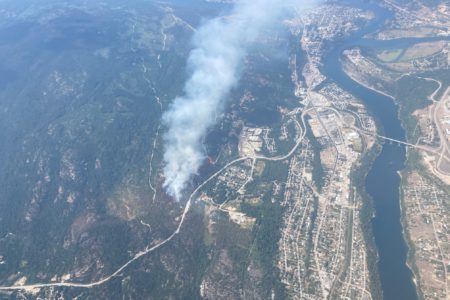Ret. Const. Schewe's DriveSmart Tip of the Week: Coping With the Snow and Slush
When it comes to winter in the “warmer” areas of British Columbia, I don’t think that anyone does a better job of making fun of bad drivers as cartoonist Adrian Raeside. The trouble is, it’s not so funny when you have to share the roads with them. Many continue to drive as if it is a warm, sunny and dry afternoon.
Last Thursday evening here on the mid island I found myself driving home in a period of heavy snowfall with a temperature of right around the freezing mark. Slushy snow was accumulating everywhere but in the tracks where passing vehicles had pushed it out of the way. Most of us had chosen to drive at 60 to 65 km/h regardless of the fact that the speed limit was posted at 90.
A few four wheel drive pickups were the exception, squooshing by in the left lane 15 to 20 km/h faster.
Four wheel drive or all wheel drive may be great for traction to get going, but when it comes to braking and cornering they are no different that two wheel drive vehicles. There is only so much friction available and it’s easy to pass the point of no return.
Occasionally, the headlights in my rear view mirror caused some anxiety. These drivers were still following the Two Second Rule in conditions that merited somewhere between four and six seconds.
If it’s too slushy to change lanes, settle back and follow along with everyone else. You are more likely to have me slow down when you tailgate than speed up to keep you happy.
Keeping back also gives you the bonus of better visibility. All of the water and slush thrown up by the vehicle in front of you will have a chance to settle and you won’t have to clear your windshield as often.
If you are comfortable that you can pass slower traffic safely, please remember the extended following distance and apply it to the front as well. Don’t move back until you are well ahead of the vehicle you passed so that you don’t blind the other driver.
In the aftermath of that snowfall, property owners failed in their duty to clear the sidewalks bordering their lots. This forced able bodied pedestrians onto the ploughed roadway and made getting around impossible for those with physical limitations.
It was not uncommon to see these pedestrians walking with their backs to traffic and drivers moving over to avoid them. What happens when circumstances combine narrow lanes, difficulty stopping and steering and oncoming vehicles that can’t move over? If you don’t see trouble coming, you won’t be able to avoid it!
If a driver must move left to avoid an obstacle, it is up to them to wait and not influence oncoming traffic before doing so.
Story URL: https://www.drivesmartbc.ca/unsafe-driving-practices/coping-snow-and-slush


























